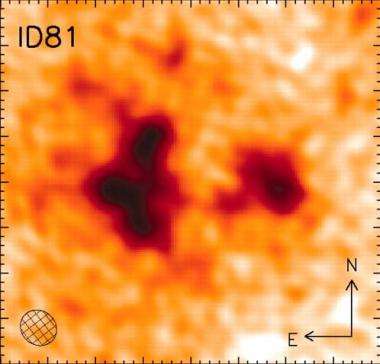Lensed galaxies

In 1915, Einstein amazed the world by predicting that the path of light could be bent by mass. As a consequence, light from a distant galaxy passing by an intervening galaxy en route to earth will be distorted. Just as a glass lens can deform the appearance of objects seen through it, so can the mass of the intervening galaxy can act as a "gravitational lens," distorting the image we would otherwise see into a more complex shape.
It was not until 1979 that astronomers spotted the first gravitationally lensed galaxy, and since then several dozen lensed galaxies have been found. Such discoveries are difficult to make, however, because the lensed galaxies are far away, very faint, and randomly found across the sky, while there are many millions of other galaxies that at first glance appear similar.
The Herschel Space Observatory, launched in May 2009, has a powerful new camera designed to image the heavens at very long infrared wavelengths; galaxies undergoing bursts of star formation appear bright at these wavelengths because their young stars heat dust which then radiates in the infrared. When Herschel scientists analyzed the first images from the new camera, they discovered many new galaxies -- and a handful of outstanding, bright ones.
A gravitational lens not only distorts the image of a distant object, it can also act like an optical lens, collecting and refocusing the light to make it appear brighter. Wondering if gravitational lensing might be responsible for the unusual brightness of these objects, the Herschel scientists teamed up with CfA astronomers Mark Gurwell and Ray Blundell to use the Submillimeter Array (SMA) to help resolve the question through its superb spatial resolution.
The SMA found that indeed the bright objects were distorted images of distant galaxies. Optical follow-ups helped to solidify the conclusion. In the most distant example, the far galaxy's light has been traveling towards us for about 10.8 billion years, about 80% of the age of the universe; light from the galaxy doing the lensing has been en route for a mere 2.8 billion years. These new results are significant because they confirm a reliable new method for finding these dramatic cosmic phenomena, but also because the warm dust they reveal helps probe the mechanisms of star formation in the distant universe.
Provided by Harvard-Smithsonian Center for Astrophysics



















